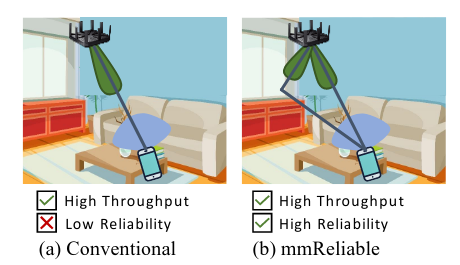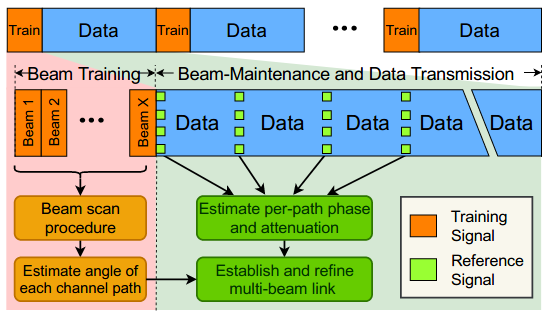Millimeter-wave communication with high throughput and high reliability is poised to be a gamechanger for V2X and VR applications. However, mmWave links are notorious for low reliability since they suffer from frequent outages due to blockage and user mobility. We build mmReliable, a reliable mmWave system that implements multi-beamforming and user tracking to handle environmental vulnerabilities. It creates constructive multi-beam patterns and optimizes their angle, phase, and amplitude to maximize the signal strength at the receiver. Multi-beam links are reliable since they are resilient to occasional blockages of few constituent beams compared to a single-beam system. We implement mmReliable on a 28 GHz testbed with 400 MHz bandwidth, and a 64 element phased array supporting 5G NR waveforms. Rigorous indoor and outdoor experiments demonstrate that mmReliable achieves close to 100% reliability providing 2.3x improvement in the throughput-reliability product than single-beam systems.

Beam maintenance is important to reduce the frequency and overhead of repeated beam-training. For instance, in the context of 5G-NR, a beam-training phase could take up to 5 ms to probe 64 beam directions with a default periodicity of 20 ms, leading to a 25% overhead. The high overhead of beam-training can be avoided by carefully utilizing intrinsic features of mmWave protocols. They use known reference signals interspersed with data communication to perform beammaintenance and refinement. These reference signals provide channel measurements with an option to set any desired beam. Due to the sparsity of these reference signals, they cannot be used for a full-fledged beam-training, and only minor changes to the beamforming vector can be made using few channel estimates. A low-overhead beam-maintenance scheme is, therefore, a must for reliable mmWave links.
